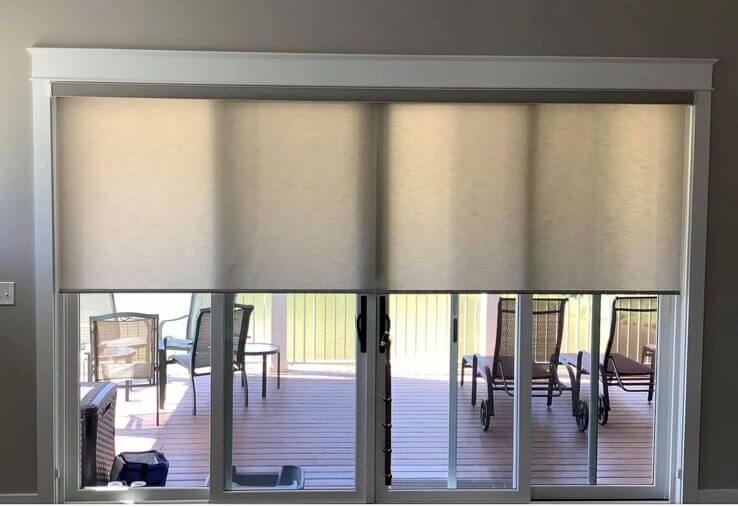Welcome to our comprehensive guide on how to clean indoor shutters, an essential task for maintaining the beauty and longevity of one of your home’s standout features. Indoor shutters not only enhance the aesthetic appeal of your space but they also play a vital role in privacy and light control. However, over time, they can accumulate dust, grime, and allergens making regular cleaning a necessity. We will explore the various materials used in shutter construction, discuss the pros and cons of different cleaning agents and techniques, and recommend tools to help you clean your windows and shutters efficiently. Whether you’re dealing with wood or composite shutters, our goal is to provide you with the knowledge to keep them looking their best.
Understanding Your Shutters
Types of Shutters:
- Wood: Classic and elegant, but requires careful cleaning to avoid damage.
- Composite: A blend of materials offering the best of both worlds, though specific care is needed.
Pros and Cons:
- Wood Shutters: Pro: Aesthetically pleasing. Con: Can warp with moisture.
- Composite Shutters: Pro: Durable and less prone to warping. Con: Can be more expensive.

Preparation for Cleaning
Tools and Materials Needed:
- Microfiber cloths
- Soft brushes or a vacuum with a brush attachment
- Mild detergent
- Vinegar (for natural cleaning solution)
Safety Tips:
- Ensure the cleaning solution is suitable for your shutter material.
- Test cleaning agents on a small, inconspicuous area first.
Cleaning Agents and Their Pros and Cons
When selecting a cleaning agent for indoor shutters, it’s crucial to consider the material of the shutters and the type of dirt or stains you’re dealing with. Here’s a more detailed look at the options:
- Water and Mild Detergent: This is the safest and most gentle option for most shutter materials, including wood, vinyl, and composite. Mix a small amount of mild detergent with warm water for an effective cleaning solution. Pros: Safe for most surfaces; inexpensive. Cons: May not be effective for tough stains or built-up grime.
- Vinegar Solution: A mixture of equal parts water and white vinegar can be an effective natural cleaning solution for vinyl and composite shutters. Pros: Natural and eco-friendly; cuts through grease and film. Cons: Strong odor; not recommended for wood shutters as it can damage the finish.
- Commercial Cleaners: There are cleaners specifically designed for different types of shutters. Pros: Powerful cleaning action; convenient. Cons: Chemicals can be harsh and may damage sensitive materials; more expensive.
- Natural Alternatives: For those preferring eco-friendly options, baking soda mixed with water can create a gentle scrubbing paste. Lemon juice is also effective for natural disinfection. Pros: Safe for the environment and your home; gentle on most surfaces. Cons: May require more effort for deep cleaning; not suitable for all stains.
Tools to Help Clean Windows and Shutters Efficiently
The right tools can make the cleaning process much easier and more effective. Here are some essentials:
- Microfiber Cloths: Ideal for both dusting and wet cleaning, microfiber cloths trap dust and dirt without scratching surfaces. Use one cloth for dusting and a separate one for applying cleaning solutions.
- Soft Brushes: A soft-bristled brush or an old toothbrush can gently remove dust and dirt from the nooks and crannies of shutter slats without causing damage.
- Vacuum with Brush Attachment: A vacuum cleaner equipped with a soft brush attachment can quickly remove dust from shutters and is especially useful for initial dusting before wet cleaning.
- Squeegee: After cleaning windows, use a squeegee to remove water from the glass for a streak-free finish. This tool is not used directly on shutters but is essential for overall window cleanliness.
Cleaning Techniques
Adopting the right techniques can significantly enhance the effectiveness of your cleaning efforts:
- Dusting: Begin with thorough dusting to remove surface dust and dirt. Use a microfiber cloth or a vacuum with a brush attachment to gently sweep over the shutters.
- Deep Cleaning: After dusting, apply your chosen cleaning solution with a microfiber cloth. For wood shutters, ensure the cloth is wrung out well to avoid excess moisture. Wipe each slat individually, paying special attention to edges and corners.
- Spot Cleaning: Address spills and stains immediately by spot cleaning. Apply a small amount of cleaning solution directly to the stain and gently wipe clean. For tough stains on vinyl or composite shutters, a baking soda paste may be used for gentle scrubbing.
- Maintenance Tips: Regular maintenance, including dusting and spot cleaning, can prevent the need for frequent deep cleaning. Keep the room ventilated during cleaning to speed up drying times and protect the material of your shutters.
Conclusion
Maintaining clean indoor shutters is not just about aesthetics; it’s about prolonging the life of your investment and ensuring a healthy environment in your home. With the right tools, cleaning agents, and techniques, you can efficiently care for any type of shutter, enhancing your home’s beauty and functionality. Remember, regular maintenance is key to avoiding the buildup of dust and grime, ensuring your shutters remain a beautiful part of your home for years to come.
Are you ready to upgrade your home with wood or composite indoor shutters? At Express Blinds Shutters Shades & Drapes our experts can make that possible! With complimentary consultations, expert recommendations, seamless installations, and unrivaled customer service – we make the experience seamless and enjoyable! Get in touch today and schedule your design consultation and find shutters to complement your unique style!




